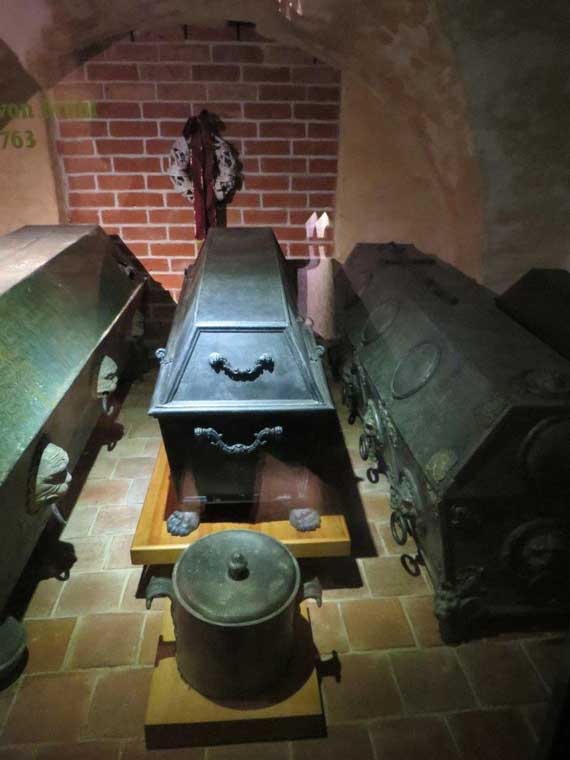
Count Heinrich von Brühl was Saxony's most important statesman in the Age of Augustus. Endowed with great power by Elector Frederick Augustus II, he determined the fortunes of Electoral Saxony and Poland in the middle of the 18th century. He played a major role in establishing Saxony and Poland-Lithuania as a major European power alongside Russia, Prussia and Austria, and shaped an era of great splendour and growing prosperity. The Seven Years' War, the outcome of which Brühl could not foresee, brought this period of prosperity to an end.

The von Brühl family came from Gangloffsömmern in Thuringia. When Heinrich von Brühl was born in Weissenfels on 13 August 1700, this part of the country belonged to the Principality of Saxony-Weissenfels. Brühl's father Hans Moritz was Privy Councillor and Lord Chamberlain to the Duke of Weissenfels. Heinrich von Brühl became a page in Weissenfels in 1713, and moved to the Dresden court as a silver page in 1719.

In the last years of Augustus the Strong's life, Brühl's political career began. After he had shown his organisational talent at the Zeithain camp, a gigantic army show, he took over key positions at court. From 1731 he was Director General of Excise and thus responsible for the collection of excise duties. From 1732 he was in charge of the entire financial administration. The young Elector Frederick Augustus II (as King of Poland Augustus III), who succeeded Augustus the Strong in 1733, trusted Brühl and entrusted him with further tasks. Brühl became a cabinet minister and had been second in command to the king since the ousting of Count Alexander Sulkovsky. The appointment as prime minister, which took place in 1746, was only a formality.

Heinrich von Brühl was raised to the rank of count by Emperor Charles VI in 1737. In 1734, for tactical reasons, he married Countess Maria Anna Kolowrat-Krakowska, a lady-in-waiting to the Queen. The fact that she was a Catholic and the children were brought up Catholic opened doors for him in Poland - although Count Brühl himself never converted to Catholicism. Referring to alleged Brühl ancestors in Poland, he was admitted to the Polish nobility and the Jastrzębiec family of arms in 1750 under the name "Oscieszino". The marriage was happy and characterised by mutual respect. Only five of at least ten children reached adulthood.

Count Heinrich von Brühl was an avid art collector and connoisseur. He managed all the electoral and royal collections and built up his own art collection alongside them. As director of the Meissen Porcelain Manufactory, he commissioned works of art made of Meissen porcelain that are still impressive today, such as the unique Swan Service. After Count Brühl's death, a large part of the collection was sold. Tsarina Catherine II acquired the Brühl painting collection, which became the foundation of the Hermitage in St. Petersburg.

At the age of 31, Heinrich von Brühl bought his first manor, Grochwitz near Herzberg/Elster. In the following decades he bought further estates, so that he eventually had landed property in all parts of Saxony. In Pförten in Lower Lusatia he created his own centre of power. Brühl had the manors of his estates extended and created magnificent palaces and parks. Since King Frederick II of Prussia had them systematically destroyed during the Seven Years' War, only little has been preserved.

Brühl organised a European power alliance against the Kingdom of Prussia. However, Frederick II of Prussia occupied neighbouring Saxony and held his own against all opponents in the Seven Years' War, causing Brühl's long-term foreign policy concept to fail. With the Peace of Hubertusburg in 1763, Saxony left the circle of the great European powers. Had Brühl's coalition won, which was entirely possible and only failed due to coincidences, Prussia would not have risen to become the dominant military power that spread like an oil slick across the map in the 19th century and eventually absorbed all of Germany.

Count Heinrich von Brühl gave up all his offices after the death of King Augustus III in October 1763. He died himself soon afterwards. At his own request, he was buried in the town church in Forst, the main Protestant church of his lordship of Pförten. There are still descendants of Brühl today. While the Protestant branch in Seifersdorf became extinct in 1923 in the male line, the Catholic branch from Pförten continues to exist.

The Prussian king Frederick II hated his political adversary Brühl. He not only wanted to harm him, but also to destroy him. As the supposedly "great one" was ultimately victorious, he also left a lasting mark on Brühl's negative image, which has not been completely eradicated to this day. Brühl is accused of extravagance, of managing the economy to his own advantage and of embezzling state funds. Prussian-German historiography has continued to spread this distorted image.

Heinrich von Brühl is one of the best-known figures in Saxon history. He is as well-known as Augustus the Strong or Countess Cosel. The GDR television series " Sachsens Glanz und Preußens Gloria ", which thrilled an audience of millions, played a major part in this. Brühl’s Terrace in Dresden has also helped to keep the statesman's name in the public consciousness. Today, Brühl is no longer condemned one-sidedly, but evaluated in a sophisticated way.
Freundeskreis Schlösserland Sachsen e.V.
In Kooperation mit Schlösserland Sachsen | www.schloesserland-sachsen.de
Stauffenbergallee 2a | 01099 Dresden | Telefon +49 3521 4920797 | Telefax +49 351 56391-1009 | service@schloesserland-freundeskreis.de | www.freundeskreis-schlösserland.de







